Designing Training Modules That Scale: Lessons from Mera Maan
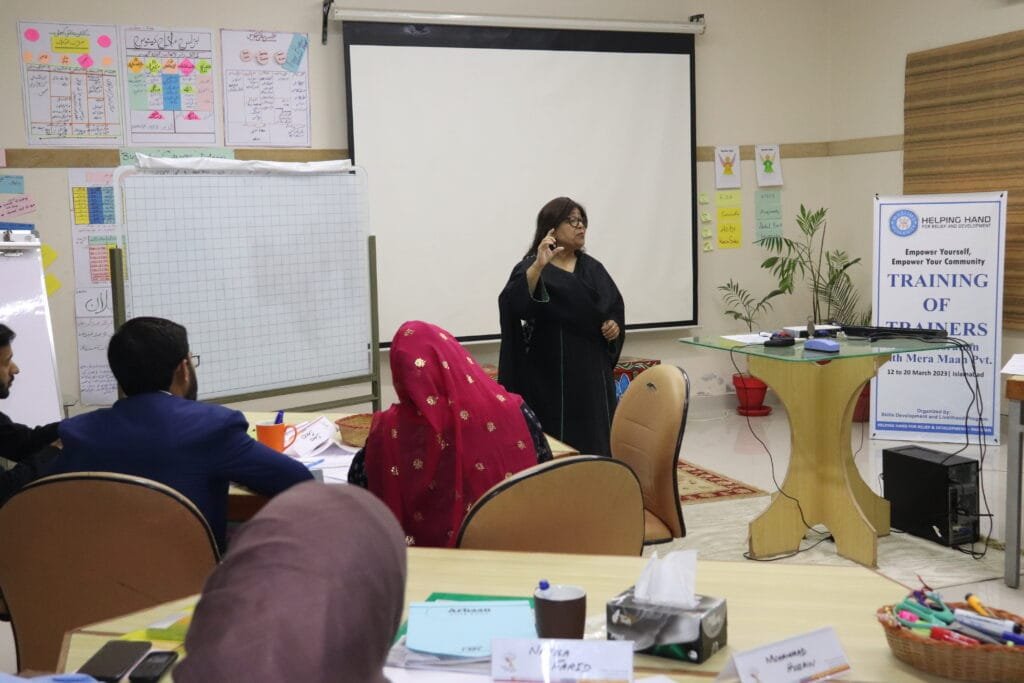
Scaling training programs across diverse regions and audiences requires thoughtful design and meticulous planning. At Mera Maan, our expertise lies in creating modular training solutions that not only adapt to various environments but also ensure consistent quality and impact. Here, we share key lessons learned from our journey of designing scalable training modules.
1. Understanding the Need for Scalable Training Modules
Scaling training programs means addressing unique local challenges while maintaining core learning objectives. For example, programs targeting urban corporate teams differ significantly from those designed for rural community workers. Each audience has its specific needs, learning pace, and engagement style, which must be considered during module design.
1.1 Adapting to Local Contexts
For training programs to succeed, it is crucial to understand the cultural, social, and economic backgrounds of participants. Tailored content ensures participants feel the training resonates with their experiences, increasing engagement and retention rates.
Mera Maan’s design and implementation projects section showcases examples of how these tailored approaches have successfully addressed diverse regional challenges, emphasizing scalability and impactful outcomes.
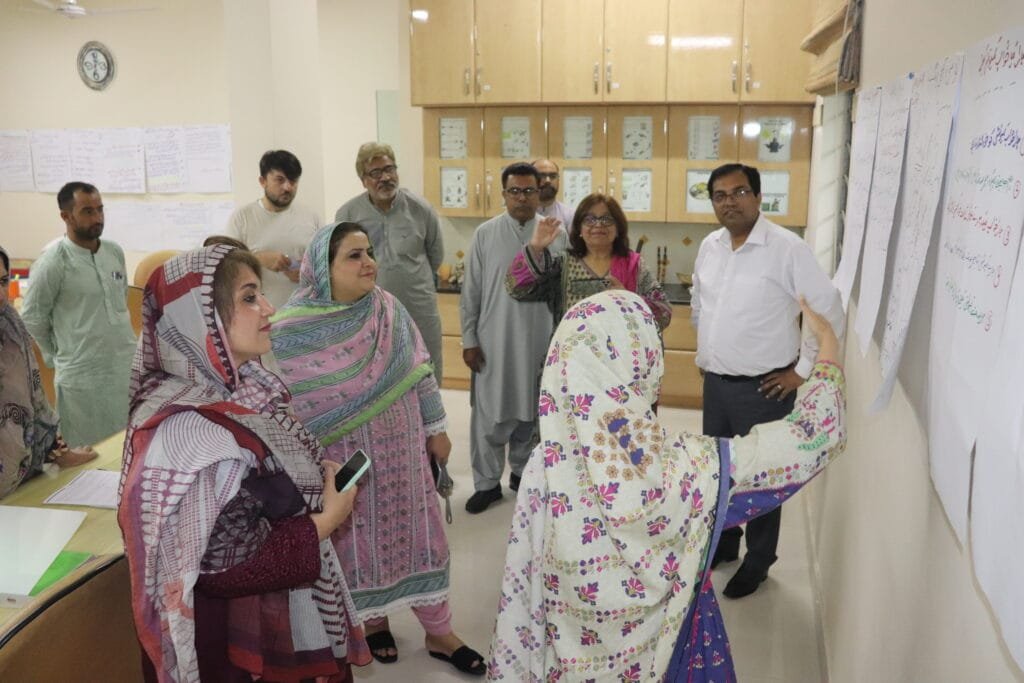
2. Key Principles of Modular Design for Training
2.1 Flexibility in Content Delivery
Modular training ensures flexibility, enabling trainers to pick and choose components that suit the specific audience. This approach works exceptionally well in multicultural regions where participants may have varying levels of prior knowledge or expertise.
For instance, some participants may excel in theoretical concepts but need extra support in applying these skills practically. Modular training allows trainers to adjust the focus without compromising the overall learning objectives.
2.2 Localization and Customization
Modules must be adaptable to cultural and linguistic differences. For example, training programs delivered in rural Balochistan require a different approach compared to urban Islamabad. Local language translations, culturally relevant examples, and region-specific challenges should be incorporated.
UNDP Pakistan has partnered with Mera Maan on several projects focused on community upliftment and leadership training. Their collaboration has helped implement localized and impactful training initiatives tailored to diverse regional needs.
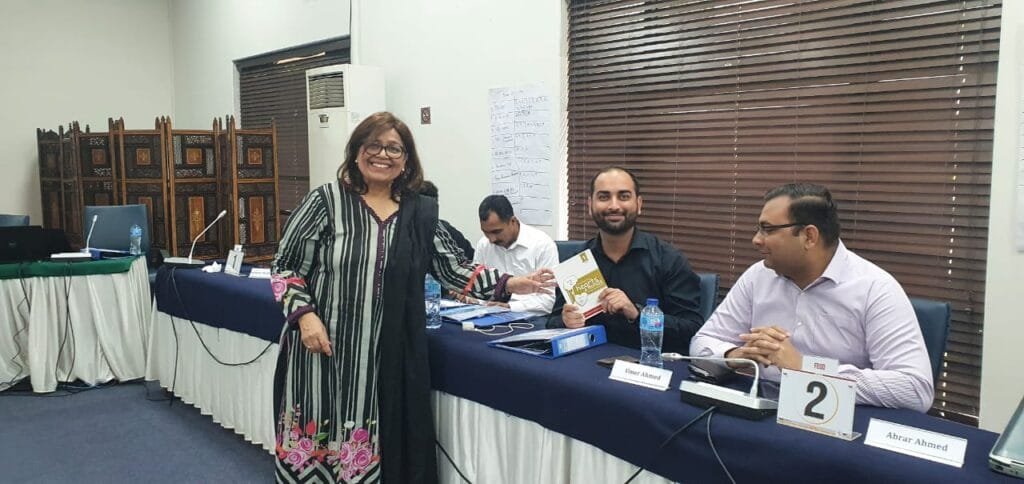
2.3 Focus on Core Objectives
While customization is crucial, it’s important to preserve the core training objectives to ensure consistent impact. This balance ensures that while participants learn in ways that suit them, the program’s overall goals remain intact.
One of Mera Maan’s notable projects, Digital Financial Literacy Training for BISP Beneficiaries, highlights this principle. The project included designing and delivering a comprehensive Digital Financial Literacy Training Program aimed at empowering Benazir Income Support Programme (BISP) beneficiaries. By conducting Training of Master Trainers (ToMT), the program equipped trainers with tools to engage both literate and non-literate participants effectively. Deliverables included a detailed Training Needs Assessment (TNA), pilot-tested materials, and a comprehensive ToMT report.
3. The Role of Training of Trainers (ToT) Programs
Training of Trainers (ToT) programs form the backbone of scalable training initiatives. By equipping trainers with standardized tools and techniques, we ensure consistent delivery across regions.
3.1 Standardizing Training Delivery
ToT programs focus on creating a uniform approach to training. Trainers are provided with comprehensive guides, interactive tools, and practical techniques to maintain the quality of delivery. This consistency ensures that whether the training occurs in Lahore or Gilgit, participants receive the same high-standard experience.
3.2 Building Trainer Capacity
Empowering trainers goes beyond imparting knowledge. ToT programs focus on building trainers’ confidence and adaptability, enabling them to handle diverse participant groups effectively. This results in an engaged learning environment where participants feel valued and understood.
Mera Maan specializes in delivering expertly designed training solutions that equip stakeholders with practical skills for sustainable community impact. These programs include module design, ToT workshops, and large-scale rollouts, all tailored to address diverse needs while ensuring measurable outcomes.
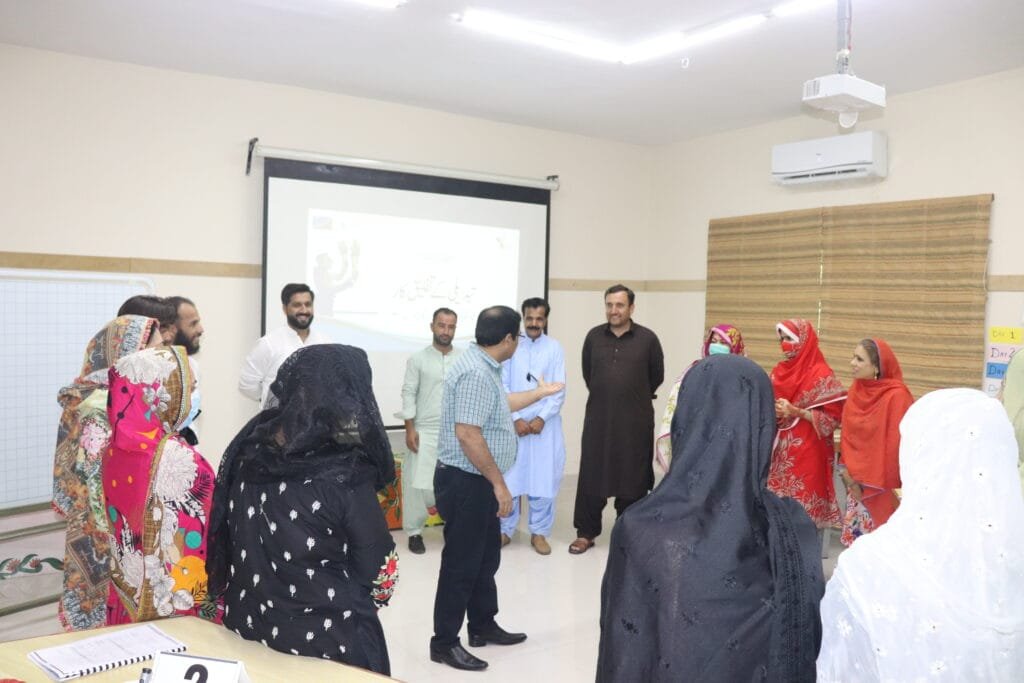
4. Leveraging Technology for Consistency
Technology plays a pivotal role in scaling training modules. From digital learning platforms to virtual workshops, these tools help deliver content uniformly, even in remote areas.
4.1 E-Learning Platforms
E-learning platforms enable trainers to create virtual classrooms that bridge geographical gaps. These platforms offer interactive content, quizzes, and real-time discussions, ensuring participants remain engaged despite physical distances.
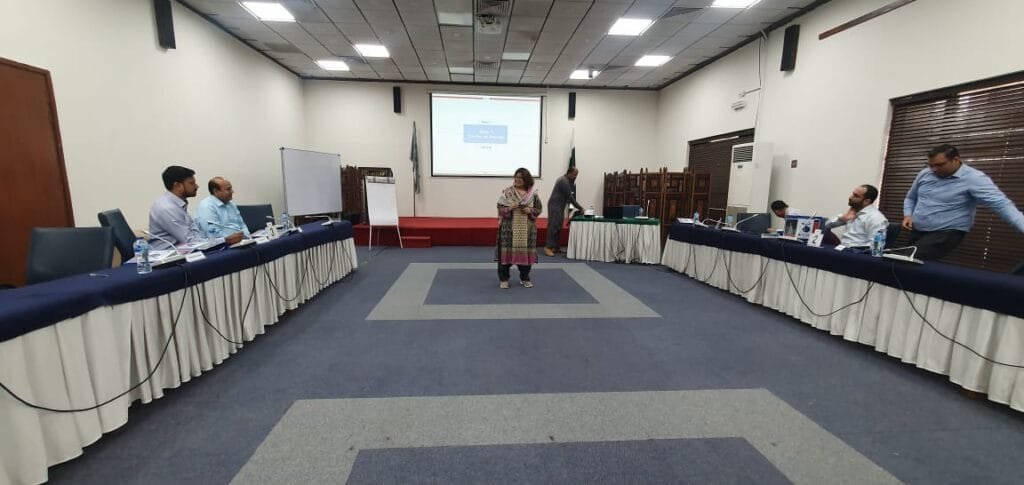
4.2 Data-Driven Refinement
Using data analytics, trainers can gather feedback to continuously refine training modules. For instance, if certain topics consistently receive lower engagement scores, trainers can revise or simplify those sections. Mera Maan integrates actionable insights with real-time data to ensure continuous improvement in training outcomes. By leveraging participatory techniques and engaging stakeholders, such frameworks foster enhanced accountability and sustainable impact.
5. Case Study: Mera Maan’s Large-Scale Rollouts
A prime example of scalable training success is Mera Maan’s rollout of capacity-building programs across Khyber Pakhtunkhwa (KPK). By employing modular designs, we were able to:
- Address diverse local challenges.
- Train over 500 community representatives.
- Ensure consistent quality through ToT programs.
5.1 Overcoming Regional Barriers
The project faced challenges such as language diversity and logistical constraints. Modular design allowed us to tailor content for different regions without losing the program’s essence.
5.2 Achieving Measurable Impact
Participants reported increased confidence and improved skills, translating into tangible community benefits such as enhanced project implementation and better resource management.
Another impactful initiative was Mera Maan’s Capacity Building of Village Council Members in KPK. This project aimed to enhance governance capacities by addressing knowledge gaps in resource mobilization, project management, and gender-inclusive decision-making. Deliverables included a 2-day tailored training program with practical materials and evaluation tools to measure knowledge improvement.
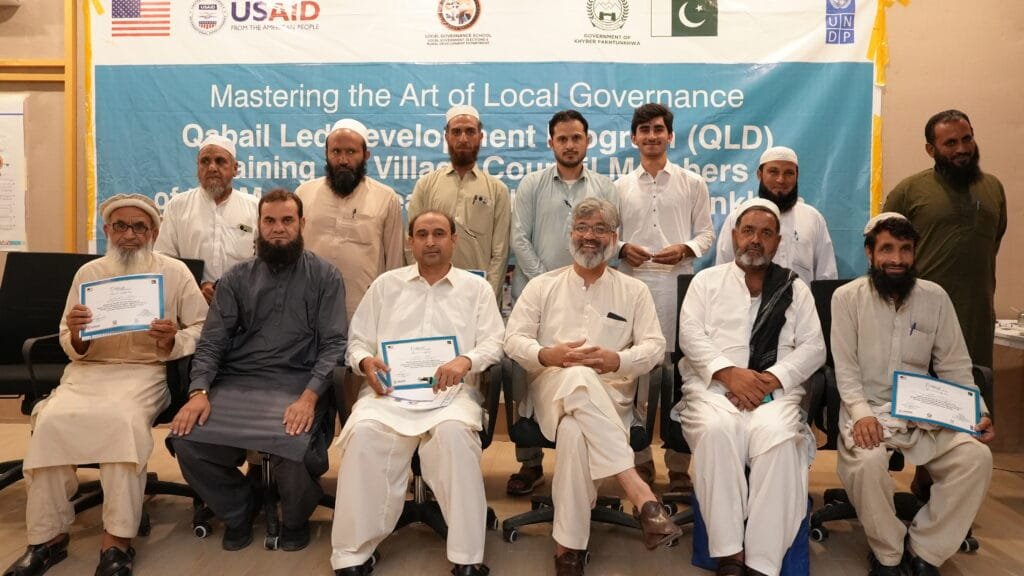
6. Challenges and How to Overcome Them
6.1 Managing Resource Constraints
Solution: Leverage partnerships with organizations like UNDP and local government agencies to access resources and share expertise.
6.2 Ensuring Quality Across Trainers
Solution: Regularly monitor trainer performance through feedback and refresher sessions. Incorporate peer reviews and participant evaluations to identify areas for improvement.
The World Bank has been instrumental in providing frameworks for enhancing training quality assurance globally. Their initiatives often focus on improving educational outcomes, governance, and capacity-building programs tailored to diverse populations.
7. Measuring Success: KPIs for Scalable Training
To gauge the success of training modules, focus on:
- Participant Satisfaction Scores: Regularly collect feedback to understand how well participants feel the training met their needs.
- Trainer Performance Metrics: Evaluate trainers’ ability to engage participants and deliver content effectively.
- Long-Term Community Impact: Assess how the training has influenced participants’ actions and community outcomes.
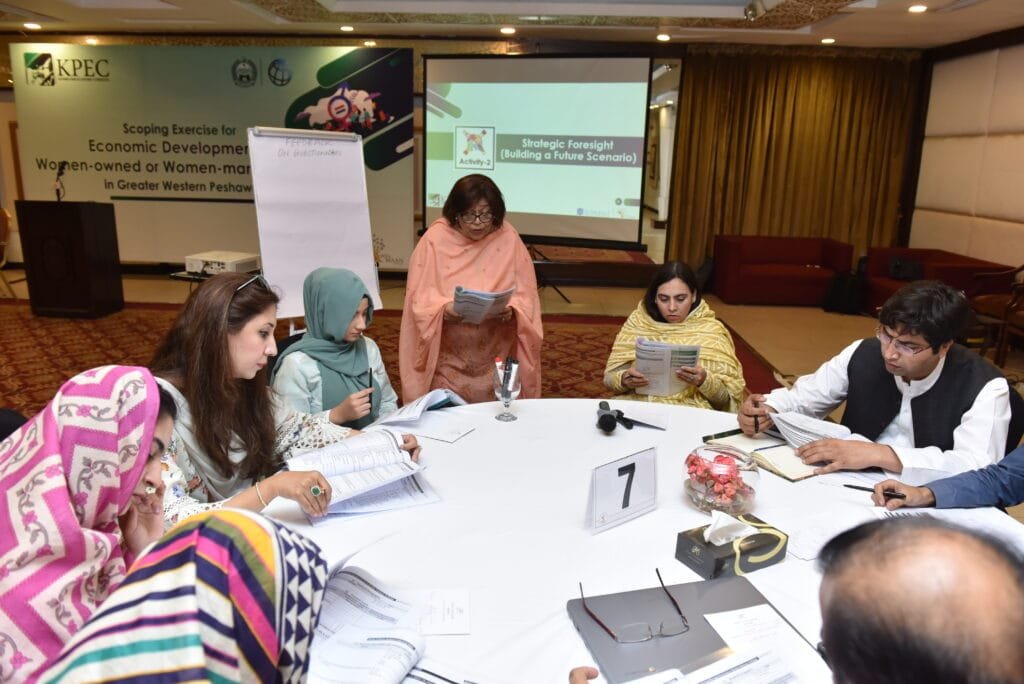
7.1 Monitoring Progress
Using tools like surveys and interviews, track participant progress over time. This data provides insights into the training’s long-term effectiveness.
Mera Maan’s Monitoring and Evaluation frameworks integrate real-time data, participatory techniques, and actionable insights to drive accountability and sustainable outcomes. By tailoring frameworks to align with specific project goals and leveraging advanced tools, Mera Maan ensures that every evaluation fosters transparency, inclusivity, and lasting impact. These methodologies empower stakeholders to adapt strategies effectively, ensuring measurable improvements across communities and programs.
Conclusion
Scaling training modules effectively requires a blend of thoughtful design, innovative techniques, and strategic partnerships. At Mera Maan, our commitment to creating impactful, community-driven projects has enabled us to deliver consistent results across diverse regions and audiences. By focusing on adaptability, collaboration, and sustainability, we ensure our training solutions leave a lasting legacy.
Learn how Mera Maan’s tailored solutions can empower your initiatives with sustainable impact. Contact Us today to collaborate!

